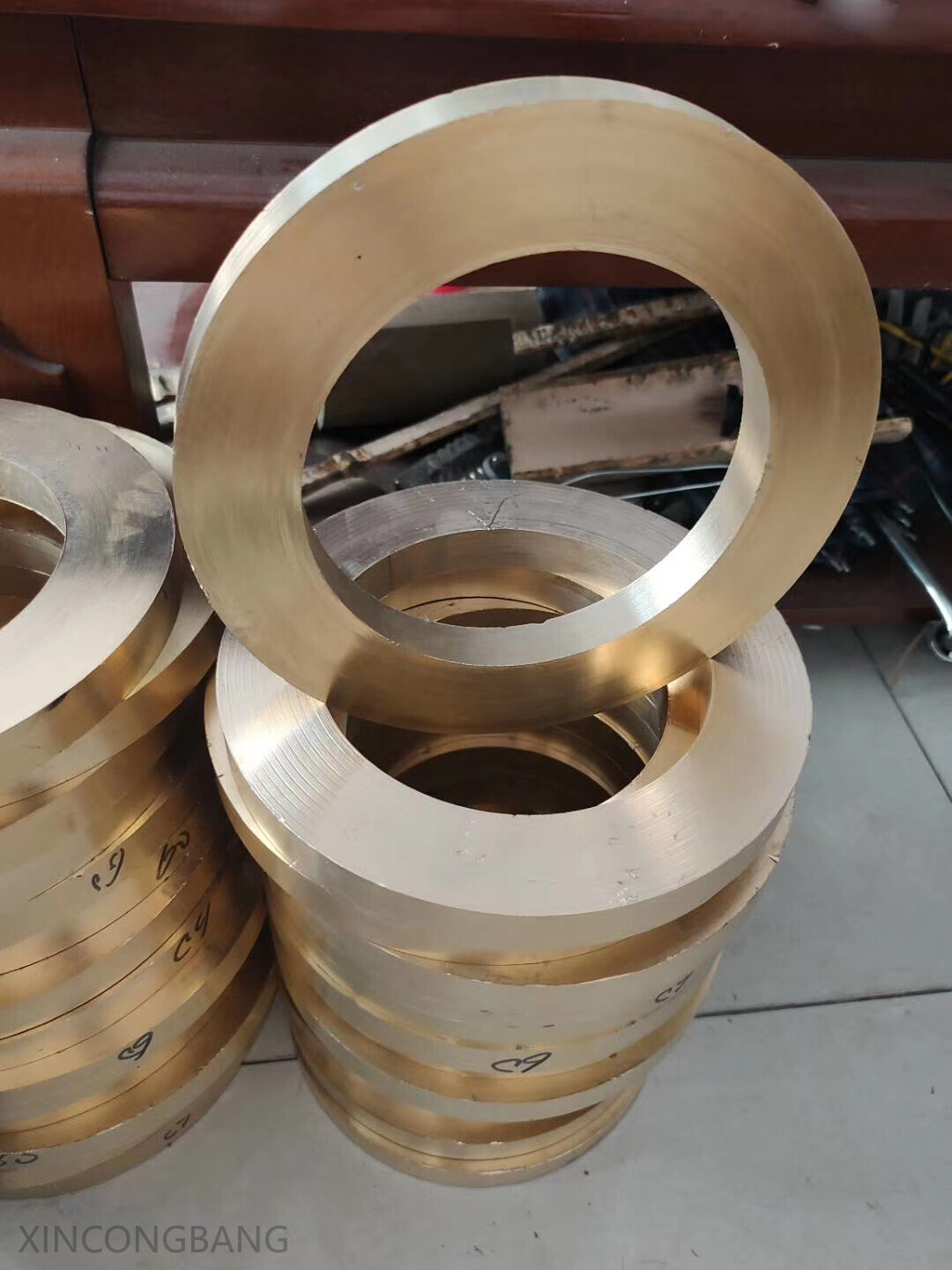Detailed Dimensional Ranges
C62400 copper tubes are manufactured under strict dimensional tolerances to meet diverse industrial requirements.
Standard Dimensions:
Critical Notes:
- Minimum Wall Thickness: Compliance with international standards (e.g., ISO, ASTM) ensures structural integrity. For example:
Tubes with OD 8–10 mm: Minimum wall thickness 0.8 mm (copper alloy).
Tubes with OD 50–76.1 mm: Minimum wall thickness 1.5 mm.
Larger diameters (e.g., 508 mm): Minimum wall thickness 4.0 mm.
- Custom dimensions (e.g., non-standard lengths or diameters) are available for specialized applications.
International Standards
C62400 copper tubes adhere to globally recognized standards to ensure quality and interoperability:
- Primary Standards:
- ASTM B150/B150M: Governs aluminum bronze rod, bar, and shapes, including chemical composition, mechanical properties, and dimensional tolerances.
- ASTM B248: Specifies requirements for wrought copper and copper-alloy plate, sheet, strip, and rolled bar.
- ISO 13337: Provides guidelines for seamless copper alloy tubes in industrial applications.
- EN 12452:2012: Defines requirements for rolled, finned, seamless copper tubes (applies to heat exchangers).
- Key Compliance Aspects:
- Heat Treatment: Mandatory stress-relieving or annealing processes to optimize ductility and strength.
- Certification: Mill test reports (MTRs) must validate chemical composition, mechanical properties, and dimensional accuracy.
- Pressure Equipment Directive (PED): Compliance with EU directives for tubes used in high-pressure systems.
Chemical Composition
C62400 Aluminum Bronze is a copper-based alloy primarily composed of copper (Cu), aluminum (Al), iron (Fe), and controlled trace elements. The precise composition adheres to ASTM B150/B150M standards and is as follows:
Notes:
- The total copper content (including Ag) must be ≥99.5% .
- Trace impurities (e.g., Pb, Zn) are restricted to ensure optimal performance .
Mechanical Properties
C62400 exhibits exceptional mechanical properties, particularly in HR50 (drawn and stress-relieved) temper. Key values are standardized under ASTM B150/B150M-19:
A. Basic Mechanical Properties
B. Performance by Product Form
Extruded Rod (≤50 mm diameter):
- Tensile Strength: 655 MPa
- Yield Strength: 350 MPa
- Elongation: 12%
- Hardness: 180–195 HRB .
Extruded Rod (51–150 mm diameter):
- Tensile Strength: 620 MPa
- Yield Strength: 275 MPa
- Elongation: 12% .
Forgings:
- Tensile Strength: 650 MPa
- Yield Strength: 340 MPa
- Elongation: 12% .
C. Additional Mechanical Characteristics
- Fatigue Resistance: Excellent under cyclic loading, ideal for gears and bearings .
- Wear Resistance: Superior due to iron-aluminum intermetallic phases .
- Impact Toughness: Retained even at subzero temperatures .
Production process and product advantages of C62400 copper tube:
1. Production process
Smelting and casting
The cathode copper and alloy elements (such as aluminum, iron, etc.) are melted at 1200℃ in an industrial frequency furnace, and then cooled and formed by a horizontal continuous casting process.
The cast copper tube is water-cooled to 50℃, and the surface oxide layer is removed by milling.
Hot working and cold working
Hot working: C62400 alloy has excellent hot working properties and can be hot extruded, hot rolled, hot forged and other processes, which is suitable for the forming of complex parts.
Cold working: The tube size is further refined through cold working processes such as planetary rolling, triple drawing, and coil drawing, while maintaining the mechanical properties of the material.
3. Heat treatment and annealing
The processed copper tube needs to be annealed (temperature range 1100-1200°F or 1400-1625°F) to eliminate stress and improve material ductility.
The online annealing process can optimize the microstructure of the material and ensure the high strength and stability of the finished product.
Welding and forming
It is recommended to use welding methods such as argon arc welding and flash welding, but gas welding or tin soldering is not suitable.
The finished product is finally processed through bending, straightening, surface cleaning and other processes.
2. Product advantages
Excellent mechanical properties
High strength and wear resistance: tensile strength of 655MPa, yield strength of 330MPa, Rockwell hardness B grade 92, suitable for high-load parts such as gears, bearings, and sleeves.
Good toughness: elongation of 14%, elastic modulus of 117GPa, can withstand complex dynamic loads.
Excellent corrosion resistance
It shows stable corrosion resistance in seawater, atmosphere, fresh water and non-oxidizing acids (such as hydrochloric acid and sulfuric acid), suitable for marine engineering and chemical equipment.
It still has antioxidant ability at high temperatures and can work for a long time below 400℃.
Thermal and electrical conductivity
Thermal conductivity is 59W/m·K, and the electrical conductivity is 0.07MS/cm. It takes into account both heat dissipation and electrical conductivity requirements and is often used in electrical connectors and heat exchangers.
Wide processing adaptability
It has excellent hot processing performance (such as hot forging and hot rolling), and also performs well in cold processing (such as bending and drawing), supporting the manufacture of complex parts.
It can replace expensive materials such as tin bronze and stainless steel, and has significant cost performance.
Wide range of applications
Industrial field: key components such as gears, cams, and hydraulic bushings.
Marine and aerospace: ship propellers, aircraft engine parts.
Electrical and automotive: electrical connectors, brake lines, and engine bearings.
Q1:Do you provide samples? Is it free or extra?
A1:Yes, we can provide samples free of charge and the customer will pay the freight.
Q2:What if I don't have export experience ?
A2:We have reliable forwarder agent which can ship items to you by sea/air/Express to your doorstep. Any way, we will help you choose the most suitable shipping service.
Q3:How long is your lead time?
A3:If it is in stock, it is usually 5-10 days. Or, if there is no inventory, 15 days, depending on the quantity.
Q4:What are your terms of payment?
A4:30% T/T deposit in advance, 70% T/T balance within 5 days after B/L copy, 100%.Irrevocable L/C at sight, 100% Irrevocable L/C after receive B/L 30-120 days, O/A.
Q5:How is your technical support?
A5:We provide lifetime online support through Whatsapp/ Skype/ Wechat/ Email. Any problem after delivery, we will offer you call anytime.
Welcome To Your Inquiry
What can we help you?
RELATED PRODUCTS









